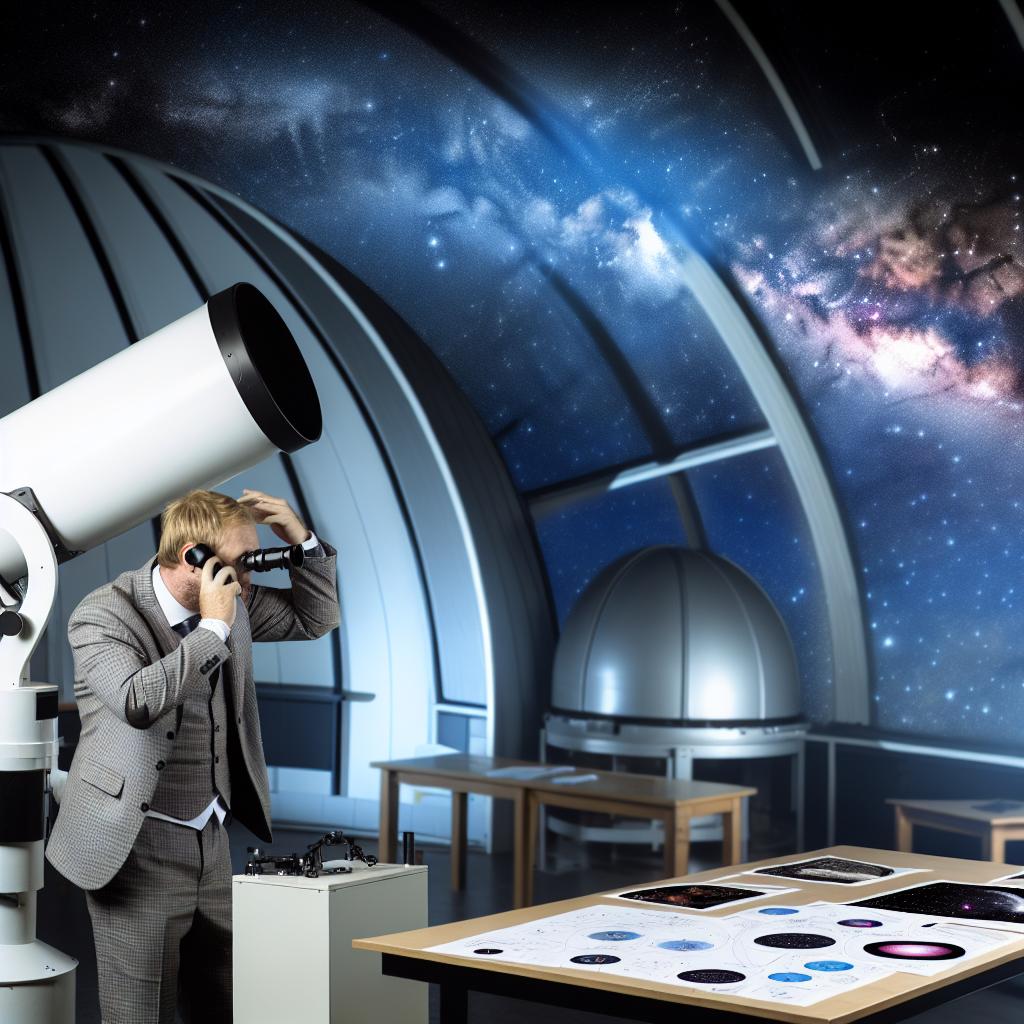Overview of Australian Astronomy and Its Significance
Australia plays a pivotal role in global astronomy.
Its clear skies provide a unique opportunity for astronomical observations.
The country hosts some of the world’s most advanced observatories.
These facilities enable scientists to explore celestial phenomena in detail.
Key Observatories in Australia
Several observatories have made significant contributions to our understanding of the universe.
For instance, the Parkes Observatory is renowned for its radio telescope.
This facility has contributed to key discoveries like pulsars and black holes.
Moreover, the Siding Spring Observatory is also noteworthy.
It houses several telescopes that contribute to both local and international research.
Research Contributions
Australian astronomers focus on various fields, from astrophysics to cosmology.
They study the formation and evolution of galaxies.
Additionally, researchers explore the conditions for life beyond Earth.
Through international collaborations, they enhance their findings.
Public Engagement and Education
Australian observatories also prioritize public outreach and education.
They host public nights to inspire interest in astronomy.
Your Personalized Career Strategy
Unlock your potential with tailored career consulting. Get clear, actionable steps designed for your success. Start now!
Get StartedThese events allow visitors to look through telescopes and engage with scientists.
Such educational initiatives foster a greater appreciation for the universe.
Future Prospects
The future of Australian astronomy looks promising.
Innovative technologies and new telescopes are on the horizon.
For example, the Square Kilometre Array aims to revolutionize radio astronomy.
As a result, Australia will remain at the forefront of astronomical research.
Historic Developments in Australian Observatories
Early Beginnings
The history of Australian observatories began in the 19th century.
In 1860, the Sydney Observatory opened its doors.
It aimed to study the Southern Hemisphere’s celestial bodies.
Consequently, astronomers focused on mapping the stars.
This initial exploration laid a strong foundation for future discoveries.
Advancements in Technology
The 20th century ushered in significant technological advancements.
Telescopes became larger and more powerful.
As a result, researchers made crucial discoveries about our universe.
Stand Out with a Resume That Gets Results
Your career is worth more than a generic template. Let us craft a resume and cover letter that showcase your unique strengths and help you secure that dream job.
Get HiredIn 1957, the Australian National University established its Mount Stromlo Observatory.
This facility became known for its innovative research in astrophysics.
Modern Developments
Recently, Australian observatories harnessed cutting-edge technology.
In 2012, the SkyMapper telescope started operation at Siding Spring Observatory.
This telescope revolutionized the way astronomers survey the sky.
It produces detailed maps of the Milky Way and beyond.
Furthermore, the Australian Square Kilometre Array Pathfinder is underway.
This project aims to advance our understanding of the universe’s origins.
Collaborative Efforts
Collaboration has always been vital in astronomical research.
Australian institutions partner with global organizations.
These partnerships enhance research opportunities and resource sharing.
For instance, the Square Kilometre Array project involves multiple countries.
These efforts aim to transform our knowledge of the cosmos.
Major Observatories in Australia and Their Unique Features
Australia Telescope Compact Array
The Australia Telescope Compact Array offers an impressive array of radio dishes.
Transform Your LinkedIn for Maximum Impact
Elevate your professional brand with a LinkedIn profile that attracts recruiters, showcases your expertise, and maximizes opportunities. Stand out in your industry with a profile built for success.
Boost ProfileThese dishes work together to create high-resolution images of astronomical phenomena.
It conducts research on pulsars, galaxies, and cosmic microwave background radiation.
Moreover, the facility is located in New South Wales, maximizing sky visibility.
Mount Stromlo Observatory
Mount Stromlo Observatory boasts a strong legacy in astronomical research.
This facility emphasizes optical and infrared astronomy significantly.
Furthermore, it plays a pivotal role in studying the universe’s structure and evolution.
The observatory was rebuilt after a devastating bushfire in 2003, demonstrating resilience.
Siding Spring Observatory
Located in New South Wales, Siding Spring Observatory is renowned for its clear skies.
This facility is home to several telescopes, including the Anglo-Australian Telescope.
Its researchers focus on planetary science and astrophysics, contributing to the global community.
In addition, Siding Spring collaborates with international observatories for joint projects.
SkyMapper
SkyMapper is the first dedicated southern sky survey telescope.
It aims to map the Milky Way and discover new celestial objects.
Additionally, it uses advanced imaging technology to achieve its objectives.
This initiative plays a crucial role in understanding the history of our galaxy.
Australian National Telescope Facility
The Australian National Telescope Facility boasts a vast network of radio telescopes.
This facility enables astronomers to conduct a wide range of cosmic observations.
It plays a critical role in studying the formation and evolution of galaxies.
Furthermore, it collaborates with other countries for large-scale astrophysical projects.
Discover More: Australia’s Space Race: Exciting Career Opportunities in Space Research and Exploration
The Role of Radio Telescopes in Cosmic Exploration
Detecting Radio Waves from Space
Radio telescopes are crucial for detecting cosmic radio waves.
These waves help scientists understand astrophysical phenomena.
Moreover, they reveal information about distant astronomical objects.
Key Observatories in Australia
Australia boasts several world-class radio observatories.
The Parkes Observatory is renowned for its advanced capabilities.
Additionally, the Australia Telescope Compact Array offers unique insights.
Scientific Applications
Radio telescopes serve various scientific purposes in astronomy.
- They study the cosmic microwave background radiation.
- They investigate pulsars and their properties.
- They assist in exploring the structure of galaxies.
Interconnected Observations
Radio telescopes provide valuable data for multi-wavelength studies.
This approach enhances the understanding of cosmic events.
For example, they complement optical and infrared observations.
Advancements in Technology
Technological innovations continuously improve radio telescopes.
Newly developed sensors enhance their sensitivity and accuracy.
Furthermore, advanced software aids in data analysis.
Collaboration Among Astronomers
Collaboration is key in radio astronomy.
Australian observatories frequently partner with international teams.
This cooperation broadens the scope of cosmic research.
Learn More: Australia’s Leading Scientific Innovations: New Career Paths in Research and Development
How Optical Telescopes Contribute to Our Understanding of the Universe
Advancements in Optical Telescope Technology
Optical telescopes have evolved significantly over the years.
Modern telescopes utilize advanced materials for construction.
Innovative technologies enhance their imaging capabilities.
These advancements allow astronomers to observe distant objects clearly.
Consequently, the quality of astronomical data has improved tremendously.
Exploring Distant Galaxies
Optical telescopes play a crucial role in exploring distant galaxies.
They capture light emissions from stars that are millions of light-years away.
This information helps scientists understand galaxy formation and evolution.
Additionally, observations reveal the presence of dark matter and energy.
Through detailed studies, astronomers map galaxy distributions throughout the universe.
Studying Exoplanets
Optical telescopes are essential for discovering exoplanets.
The transit method involves monitoring stars for periodic dimming.
This dimming indicates a planet passing in front of the star.
Furthermore, spectroscopic analysis can reveal an exoplanet’s atmosphere.
Such findings contribute to our understanding of potential life beyond Earth.
Investigating Stellar Lifecycle
Telescopes facilitate the study of the lifecycle of stars.
They allow astronomers to observe different stages of stellar evolution.
For example, telescopes can capture images of star formation regions.
The evolution of massive stars culminates in spectacular supernovae.
These events enrich the universe with heavy elements.
Collaborative Efforts in Astronomy
Australian observatories collaborate with global astronomical communities.
This collaboration enhances research capabilities using optical telescopes.
Joint projects often yield groundbreaking discoveries and insights.
For instance, the Australian National University partners with international teams.
Such efforts increase observational data and broaden scientific understanding.
Learn More: How to Become a Marine Biologist in Australia: Essential Skills and Career Paths

Collaborations Between Australian and International Astronomers
Global Partnerships
Australian observatories frequently collaborate with international institutions.
These partnerships enhance astronomical research and data sharing.
For instance, the Australian National University works closely with NASA.
This collaboration aims to investigate deep space phenomena.
Moreover, they share insights on planetary exploration missions.
Joint Research Projects
Several joint research projects highlight these collaborations.
One prominent example is the Square Kilometre Array initiative.
This massive radio telescope project involves multiple countries.
It aims to explore the universe’s first light and cosmic evolution.
By combining resources, teams tackle complex scientific questions.
Data Exchange and Technology Sharing
Data exchange is crucial in these collaborative efforts.
Australian astronomers provide unique data sets to partners worldwide.
In return, they gain access to international research findings.
This exchange accelerates scientific discoveries significantly.
Additionally, technology sharing leads to innovative astronomical tools.
Training and Development Opportunities
Collaborations also foster training and development opportunities for astronomers.
Many Australian institutions offer workshops for international students.
These workshops cover various astronomical techniques and technologies.
Such initiatives promote knowledge transfer and skill development.
Consequently, they strengthen the global astronomy community.
Public Engagement and Outreach Programs
Furthermore, collaborators often engage in public outreach activities.
Programs aim to inspire future generations in science and technology.
Joint public lectures and workshops emphasize the importance of astronomy.
By involving the public, they promote understanding of the universe.
This effort ultimately nurtures a culture of scientific curiosity.
Gain More Insights: Australia’s Top Science Jobs: High-Demand Research Careers
Technological Advancements in Astronomical Research from Australia
Innovative Telescopes
Australia boasts some remarkable telescopes that enhance astronomical research.
The Anglo-Australian Telescope continues to be a leader in optical astronomy.
Additionally, the Sydney Institute for Astronomy develops advanced imaging technologies.
These telescopes capture images with excellent clarity, revealing distant cosmic phenomena.
Furthermore, innovations such as adaptive optics reduce atmospheric distortion.
Satellite Technology
Satellite technology transforms how astronomers gather data from the universe.
The Australian Square Kilometre Array Pathfinder uses advanced radio frequency technology.
This facility allows astronomers to explore the cosmic microwave background radiation.
Moreover, data processing capabilities help analyze massive datasets effectively.
Satellite missions contribute significantly to our understanding of dark matter and energy.
Collaborative Research Initiatives
Australia actively participates in international astronomical collaborations.
Projects such as the Australian Research Council’s Space Space program enhance knowledge sharing.
Collaborations often include universities, research institutions, and global observatories.
This synergy fosters innovation and technical advancements in astronomical methods.
Through such efforts, Australia maintains a prominent role in global astronomical research.
Public Involvement and Education
Public engagement promotes interest in astronomy within Australian communities.
Educational programs and outreach initiatives inspire the next generation of astronomers.
Observatories offer guided tours and workshops to broaden public understanding.
School partnerships facilitate hands-on experiences with telescopes and other technologies.
Such initiatives build awareness and appreciation of the universe’s mysteries.
Case Studies of Significant Astronomical Discoveries Made in Australia
Discoveries at the Parkes Observatory
The Parkes Observatory played a pivotal role in the discovery of pulsars.
This facility, located in New South Wales, became renowned for its radio astronomy capabilities.
In 1967, Jocelyn Bell Burnell and Antony Hewish identified the first pulsar.
They named it LGM-1, short for “Little Green Men One,” due to its regular pulse.
This groundbreaking find established a new realm of astrophysics.
Unveiling the Cosmic Microwave Background
The Australia Telescope was crucial in studying the cosmic microwave background radiation.
This radiation is key to understanding the universe’s origins.
Researchers at the University of Sydney contributed significantly to this field.
Their work helped confirm the Big Bang theory and its implications for cosmology.
The Role of the Anglo-Australian Telescope
The Anglo-Australian Telescope has been instrumental in various astronomical breakthroughs.
This telescope allowed astronomers to map distant galaxies with precision.
A notable discovery was the observation of dark matter distribution in galaxy clusters.
This finding challenged previous notions of galactic structure and evolution.
Insights from the Southern Hemisphere
Australian observatories offer unique perspectives on southern celestial phenomena.
The SkyMapper telescope has mapped the southern sky extensively.
It has identified numerous variable stars and transient events.
These observations enhance our understanding of stellar evolution and cosmic events.
Collaborative Efforts and Global Contributions
Australian astronomers often collaborate with international research teams.
The Square Kilometre Array project is a prime example of global cooperation.
This ambitious initiative aims to revolutionize our understanding of the universe.
Australia’s remote location provides an ideal setting for extensive radio observations.
Such collaborations foster a wealth of shared knowledge and discoveries.
Additional Resources
Job Register | American Astronomical Society
How is it like being an Astronomer for a career? Do you regret or like …




